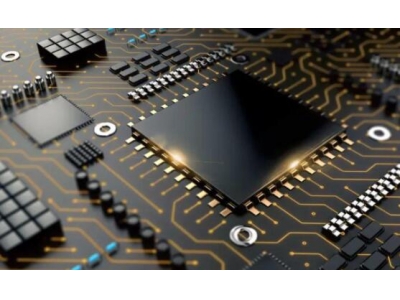一、chip芯片的龙头公司?
是三安,路美和士兰明芯公司。
其中,厦门三安电子有限公司是目前国内最大、国际一流的超高亮度发光二极管外延及芯片产业化基地 ,占地5万多平方米。 公司目前的产品主要有全色系LED外延片、芯片、光通讯核心元件等,产品技术指标属世界先进水平。公司被国家科技部列入国家半导体照明工程龙头企业 。
二、The Advantages of Stacked Chip Technology
Introduction
In recent years, the demand for advanced electronic devices and technologies has been on the rise. To accommodate this demand, engineers and researchers have been continuously exploring new ways to enhance the performance and functionality of electronic components. One such innovation is stacked chip technology, which involves vertically integrating multiple layers of chips. This article will delve into the advantages offered by stacked chip technology and its potential impact on the electronics industry.
Increased Performance
One of the main advantages of stacked chip technology is the significant improvement in performance. By stacking multiple chips on top of each other, the interconnections between the chips can be drastically reduced, leading to shorter electrical paths. This results in faster data transfer rates and reduced latency, ultimately enhancing the overall performance of the electronic device. Moreover, the proximity of the chips enables better heat dissipation, ensuring that the device operates at optimal temperatures, further contributing to improved performance.
Enhanced Functionality
Stacked chip technology also allows for enhanced functionality in electronic devices. By integrating different types of chips, such as processors, memory modules, and sensors, into a single stack, the device can perform a wide range of tasks more efficiently. For example, in smartphones, stacked chip technology allows for seamless multitasking by enabling the simultaneous operation of various functions, such as gaming, web browsing, and video streaming. Furthermore, the compact size of stacked chips enables the design of smaller and lighter devices, which is particularly beneficial for portable electronics.
Cost Efficiency
Implementing stacked chip technology can lead to notable cost savings in the production of electronic devices. As chips become smaller and more densely packed, the overall size of the device can be reduced, resulting in lower manufacturing and materials costs. Additionally, the reduced interconnects in stacked chips require less power, leading to decreased energy consumption and lower operational costs. These cost benefits make stacked chip technology an attractive option for manufacturers looking to maintain competitive pricing while offering advanced features.
Future Outlook
With its numerous advantages, stacked chip technology is expected to become increasingly prevalent in the electronics industry. As researchers continue to refine the manufacturing processes and optimize the performance of stacked chips, the technology will likely find its way into a wider range of applications. From consumer electronics to healthcare devices to autonomous vehicles, stacked chip technology has the potential to revolutionize various industries, paving the way for more advanced and efficient electronic devices.
Conclusion
Stacked chip technology offers a host of benefits, including increased performance, enhanced functionality, and cost efficiency. As the demand for advanced electronic devices grows, stacked chip technology can provide the necessary solutions to meet these demands. With its potential to revolutionize various industries, the future looks promising for stacked chip technology. By embracing this innovative technology, manufacturers and consumers alike can benefit from faster, more efficient, and more capable electronic devices.
三、chip原理?
真核生物的基因组DNA以染色质的形式存在。因此,研究蛋白质与DNA在染色质环境下的相互作用是阐明真核生物基因表达机制的基本途径。
染色质免疫沉淀技术(chromatin immunoprecipitation assay, CHIP )是目前研究体内DNA与蛋白质相互作用的方法。
染色质免疫共沉淀(CHIP)的原理:
是在活细胞状态下固定蛋白质-DNA复合物,并将其随机切断为一定长度范围内的染色质小片段;
然后通过免疫学方法沉淀此复合体,特异性地富集目的蛋白结合的DNA的片段;
通过对目的片段的纯化与检测,从而获得蛋白质与DNA相互作用的信息。
染色质免疫共沉淀(CHIP)应用:
1、检测体内反式因子与DNA的动态作用。
2、研究组蛋白的各种共价修饰与基因表达的关系。
3、 CHIP与基因芯片相结合建立的CHIP-on-chip方法已广泛用于特定反式因子靶细胞的高通量筛选。
4、CHIP与体内足迹法相结合,用于寻找反式因子的体内结合位点
5、 RNA-CHIP用于研究RNA在基因表达调控中的作用。
6、CHIPseq获得全基因组范围内与组蛋白、转录因子等互作的DNA区段信息
四、chip技术?
Chip
芯片技术
“Chip”技术作为生命科学的最新技术近些年来发展迅速,被广泛的应用于各个生命科学领域,包括疾病预测与诊断、基因突变检测、遗传学产前诊断等临床应用中。芯片技术包括最常见的DNA芯片(基因芯片)、蛋白芯片、microRNA芯片及最新开放的新型芯片等。
五、super chip是哪个芯片厂?
Superchip是英伟达公司第一款专为数据中心设计的纯 CPU 的 Arm 芯片。基于 Neoverse 的架构,支持 Arm v9,并通过Nvidia 新的 NVLink-C2C 互连技术将两个72核心的Hopper CPU融合在一起(CPU+CPU),提供一致的 900 GB/s 连接,组成144核的Grace CPU Superchip。
此外,基于 Arm v9 Neoverse的芯片支持 Arm 的 Scalable VectorExtensions (SVE),这是一种性能提升的 SIMD 指令,其功能类似于 AVX。
六、chip4是什么芯片?
darckchip 4是TI DLP的最新芯片组。
DLP是为投影仪、Pico 投影仪、HDTV、数字影院以及全球众多新的创新器件提供支持的投影技术。DLP使用高效率光学系统,有效地把光线反射到屏幕,
七、chip同类单词?
1 同类单词是“芯片”。2 这是因为“chip”在英语中的意思是“碎片、切屑、损坏”,而“芯片”在电子技术领域中指的是集成电路板上的微小芯片,两者所属的领域相同。3 在电子产业不断发展的今天,“芯片”已成为智能手机、电脑等电子产品中不可或缺的部件,具有非常重要的应用价值。
八、chip可数吗?
chip作名词时是可数,复数形式是chips
chip
美 /tʃɪp/
英 /tʃɪp/
n.
炸薯条(片);芯片,晶片;碎片,碎屑;缺口;筹码;(足球的)挑球,(高尔夫球)短切球
v.
打缺,弄缺;铲,凿,削;短切(球),踢(高球);把(土豆等)切成小片(条)
过去式 chipped
过去分词 chipped
现在分词 chipping
第三人称单数 chips
复数 chips
双语例句:
The edge of the bowl chipped because of the impact.
碗的边缘受撞击而碎掉了。
九、chip怎么记?
联想方式:chip 棋牌
记忆方法:棋牌室摆放有炸土豆片
n.
炸薯条;(木头、玻璃等的)缺口,缺损处;(木头、玻璃等上掉下来的)碎屑,碎片,碎渣;油炸土豆条;
v.
打破;弄缺;被损坏;切下,削下,凿下(碎片、屑片);打(或踢)高球;近穴击球;
例句
We ate chips every night, but hardly ever had fish
我们每晚吃炸薯条,但几乎从不吃鱼。
十、Chip什么意思?
Chip,英文单词,名词,动词,作名词时意为"炸薯条(片);芯片,晶片;碎片,碎屑;缺口;筹码;(足球的)挑球,(高尔夫球)短切球。"作动词时意为"打缺,弄缺;铲,凿,削;短切(球),踢(高球);把(土豆等)切成小片(条)。"


 发布于
2024-10-11
发布于
2024-10-11